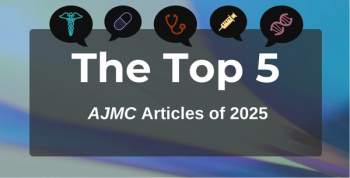
Experts in JAMA Say Diabetes Demands Global Solutions
Authors led by Harvard's Frank Hu, MD, write that combating diabetes worldwide requires policy solutions that recognize the societal and environmental forces that work against those who might try to pursue healthier lifestyles. Hu recently spoke at Patient-Centered Diabetes Care 2015, presented by The American Journal of Managed Care and Joslin Diabetes Center.
The worldwide pandemic of diabetes demands population-level policy solutions, as the rising cost of the disease threatens to wipe out the economic gains of the past 30 years in low- and middle-income countries, according to JAMA authors led by Harvard’s Frank B. Hu, MD, PhD, who recently completed service on the 2015 Dietary Guidelines Advisory Committee (DGAC).
Hu, a professor of epidemiology and nutrition in the Harvard School of Public Health, also presented
Writing Thursday in JAMA, Hu and coauthors Ambika Satija, also of Harvard School of Public Health, and JoAnn E. Manson, MD, DrPH, of Brigham & Women’s Hospital and Harvard Medical School, write that diabetes is increasingly a disease of the poor, with 77% of the world’s diabetic population living in low- and middle-income nations. Unfortunately, they write, improvements in standard of living in the past generation have come with the abandonment of traditional diets in favor of Western diets, which favor processed foods and sugar-sweetened beverages. Trends toward less physical activity had also hastened the increase in obesity, with a resulting rise diabetes, they write.
“Genetic factors also play a role in diabetes, but are not sufficient to explain the escalating diabetes that has occurred in recent decades,” they write. The authors state that 380 million people have the disease, accounting for $548 billion just in medical costs in 2013. Current trends would put the world population with diabetes at 592 million by 2035.
While it is important for physicians to urge those with diabetes or prediabetes to change diet, exercise and lifestyle patterns, the crushing impact of diabetes worldwide cannot be reversed by relying on individual acts of discipline. Instead, global leaders must acknowledge how societal, environmental, and policy factors have caused this tide of disease, and they must act consciously to reverse it.
“Policy choices are needed to advance this transformation,” they write, calling for both “individual-level factors with environmental and policy factors to produce an interacting network.” While Hu, Satija, and Mason are calling for action on a global scale, they are not alone in calling for this two-pronged approach.
In the current issue of
The JAMA writers state that some global efforts are bearing fruit. Of note, they state that Mexico’s soda tax has reduced consumption of sugar-sweetened beverages by 10% in its first 5 months.
They offer a list of examples of steps that governments can take to promote healthier eating and more physical activity, including:
· Taxes on unhealthy foods
· Improved food labeling, including front package labeling
· Marketing regulations for foods targeted at children
· Standards for foods in child care settings and schools
· Regulations on foods that compete with school lunches
· Making water available for free in early childhood and school settings
· Physical activity requirements for child care settings
· Physical education requirements for all schools
· Better land use policies that promote walking and active lifestyles.
Reference
Hu FB, Satija A, Manson JE. Curbing the diabetes pandemic: the need for global policy solutions [published online May 21, 2015]. JAMA. 2015 doi:10.1001/jama.2015.5287.
Newsletter
Stay ahead of policy, cost, and value—subscribe to AJMC for expert insights at the intersection of clinical care and health economics.








































